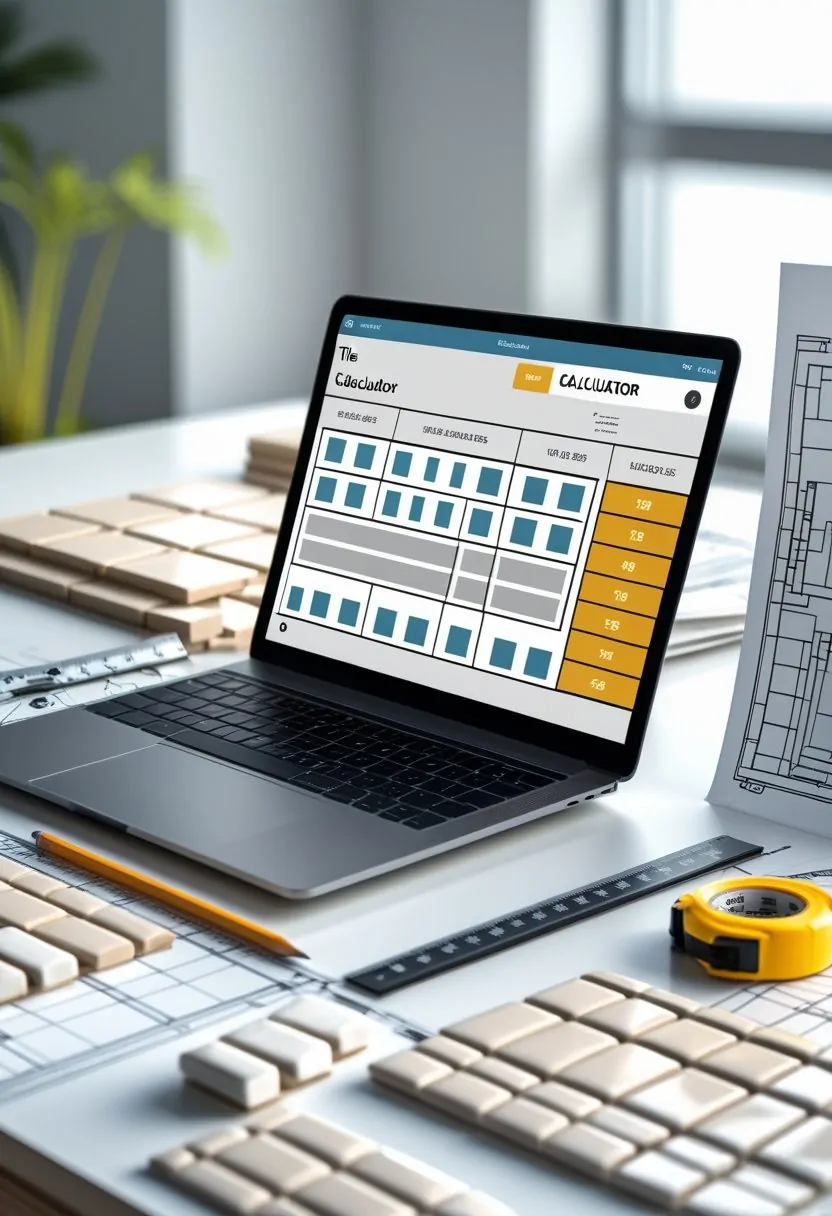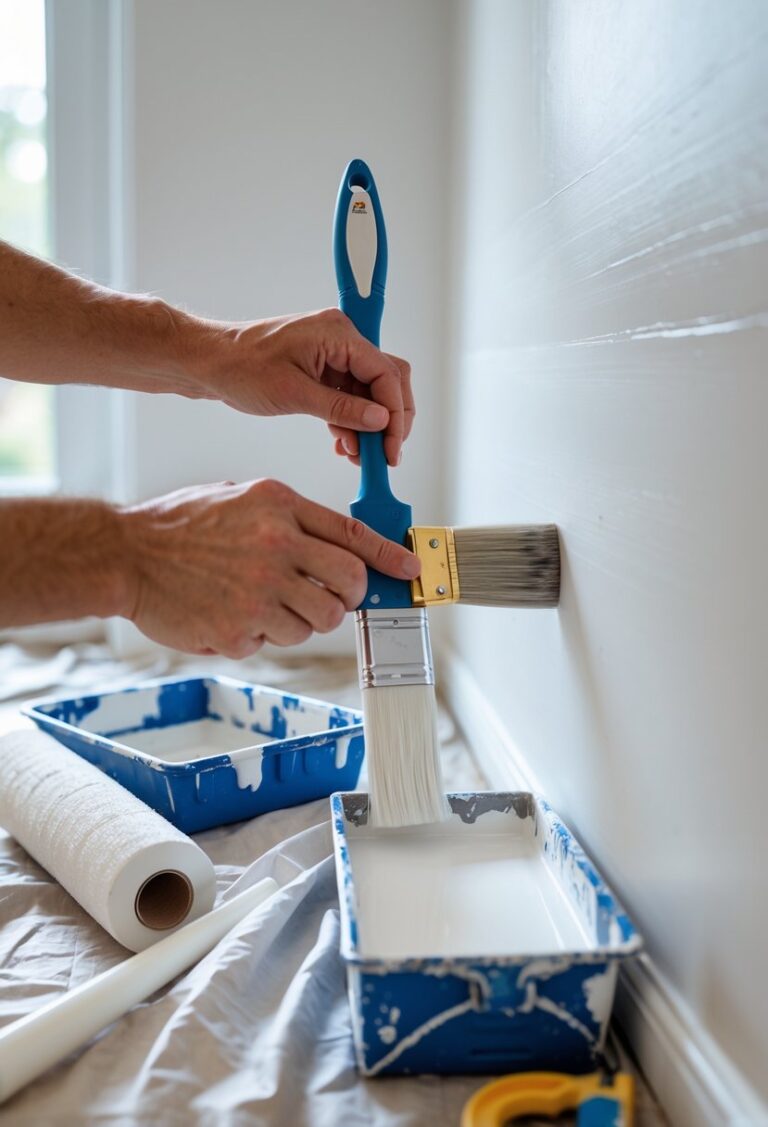Tiles Calculator for Accurate Material Estimation and Cost Planning
A tile calculator is a useful tool for anyone planning a tiling project. It helps figure out how many tiles are needed to cover a specific area, saving time and reducing waste. By entering the size of the tiles and the area to cover, users get a clear estimate of the number of tiles required, often including extra for cuts or mistakes.

Using a tile calculator simplifies the planning process. It takes into account factors like tile size, room dimensions, and sometimes even grout space or waste allowance. This makes it easier to buy the right amount of materials without overspending or running short during installation.
Tile calculators are especially helpful for both small DIY projects and larger renovations. They provide quick, accurate results that can prevent costly errors and keep projects on track.
Key Takeaways
- Tile calculators estimate how many tiles are needed accurately.
- They factor in tile size, area, and extra materials for waste.
- Using them helps avoid overbuying or running out of tiles.
How Tile Calculators Work

Tile calculators work by using specific measurements and details about the area and tiles. They carefully calculate the number of tiles needed, including adjustments for spaces between tiles. This helps avoid buying too many or too few tiles.
Tiles Calculator for Accurate Estimation
Inputting Surface Measurements
The user begins by entering the length and width of the surface to be tiled. This surface could be a floor, wall, or backsplash. The tile calculator uses these numbers to find the total area in square feet or meters.
Accurate measurements are crucial. Even small errors can lead to ordering too many or too few tiles. Some calculators allow adding an extra percentage for waste or cutting mistakes.
Selecting Tile Size and Shape
Next, the tile calculator needs the tile size. The size is usually given in inches or centimeters and includes both length and width. Different shapes, like square or rectangular tiles, can also be selected.
The calculator uses tile size to find out how many tiles fit into the total surface area. Smaller tiles will mean a higher number of tiles needed, while larger tiles reduce the count.
Considering Grout Lines and Spacing
Tiles are not laid edge to edge. Spacing between tiles, called grout lines, is necessary for a clean finish. The tile calculator factors in these gaps to adjust the total number of tiles required.
Users can input the width of grout lines, and some calculators allow for overlap or extra spacing. This step ensures an accurate tile count that reflects real installation conditions.
Step-By-Step Guide to Using a Tiles Calculator

Using a tiles calculator requires accurate measurements and correct data input. It helps find the right number of tiles for any project by including tile size, area dimensions, and extra material for mistakes or design patterns.
Measuring Areas for Tiling
First, measure the length and width of the surface to be tiled. This can be a floor, wall, or backsplash. Use a tape measure and record the dimensions in either feet/inches or meters/centimeters, depending on the calculator’s units.
If the area is not a simple rectangle, divide it into smaller shapes like rectangles or squares. Measure each part separately, then add those areas to get the total. Avoid guessing to reduce errors.
Make sure to subtract spaces that won’t need tiles, such as doors or built-in cabinets if the calculator allows. Accurate area size is critical to calculate tiles needed correctly.
Entering Tile Dimensions
Next, input the length and width of a single tile into the calculator. These details affect how many tiles fit into the measured area.
Tiles come in various sizes, commonly 12×12 inches or 30×30 centimeters, but smaller or larger tiles may be used. The calculator uses this data to determine how many whole tiles cover the space.
Some calculators ask for tile shape and layout type, which helps adjust the count. For example, staggered or patterned layouts may require more tiles.
Adjusting for Wastage and Pattern Complexity
Most tile calculators include an option to add extra tiles for wastage. Wastage accounts for broken tiles, cutting errors, and fitting irregular edges.
For better accuracy, it’s typical to add 5-10% more tiles than the exact calculated number. Complex patterns like herringbone or diagonal layouts need more tiles due to extra cuts and alignment.
Users should enter a percentage based on the project’s difficulty and tile type. This step ensures enough tiles are available without overspending but covers all installation needs.
Practical Considerations in Tile Calculation

Accurate tile calculation involves more than measuring the area. Factors like extra tiles for repairs, matching batch numbers, and careful estimating help ensure smooth tile installation without delays or mismatches.
Allowing for Future Repairs
When calculating the number of tiles needed, it is important to add extra tiles for future repairs. Tiles can crack, chip, or get damaged over time, so having spare tiles makes replacement easier without noticeable differences.
A common recommendation is to add 5% to 10% extra tiles to the total count. This small buffer accounts for breakage during installation and possible future repairs. Without this margin, it can be difficult to find matching tiles later if the style or batch is discontinued.
Keeping leftover tiles safely stored after installation helps prepare for unexpected damage. This practice saves time and prevents expensive reorders or mismatched tile repairs.
Importance of Batch Numbers
Tile batch numbers identify a specific production run of tiles. Even tiles of the same style may vary in color or texture if they come from different batches. Using tiles from the same batch ensures a uniform appearance on the finished surface.
When ordering tiles, the batch number should be noted and matched exactly if more tiles are ordered later. If a new batch is used for repairs or additions, variations can be noticeable and affect the look of the project.
Contractors or homeowners should request extra tiles from the initial batch and keep the packaging or documentation that shows the batch number for future reference.
Tips for Accurate Tile Estimation
To estimate the number of tiles needed, first calculate the total area to cover in square feet or meters. Then divide this by the area of one tile, including grout space if needed.
Include an extra 5% to 10% for waste, cutting mistakes, and future repairs. This is especially important for irregular spaces or complicated layouts.
Use these steps for better results:
- Measure the length and width of the area accurately.
- Note the size of tiles and grout spacing.
- Factor in tile shape and pattern complexity.
- Round up numbers instead of cutting too close.
This approach minimizes tile shortages and avoids unnecessary expenses on excess material.






